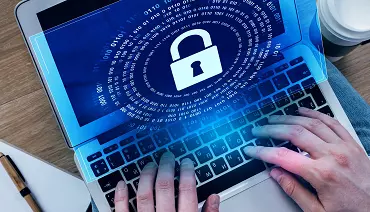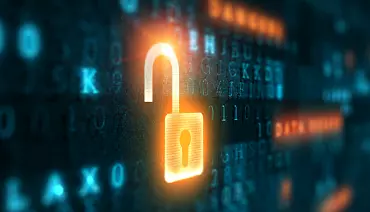
Is your home network safe? Are you putting your corporate assets at risk while working from home? At 10 months into the ‘new way to work’ with many more such months on the horizon, QA Consultants shares simple guidelines to secure your work from home environment.
We have all been doing this Work From Home (“WFH”) thing for several months now. Not only work, but also school from home, competition for network bandwidth, shared devices, and conflicting requirements. Let’s start 2021 with a Security Health Check for your home environment. The variety of users, devices, networks, and access points puts us in a fragile position with little support. Applications such as videoconferencing and filesharing are being regularly misconfigured and this misuse can lead to serious personal and organizational security exposure. Advanced email phishing attempts will have plenty of ill-prepared targets if WFH users are not properly prepared.
Do not be the reason your corporate network has been compromised.
Conducting business virtually has introduced us to new applications in our separated collaboration and our ‘separate but together’ world. Coordinating 20, 50, or 100 people into a virtual conference room is hard enough, but many are trying to do the same with families, AND ON YOUR WORK COMPUTER!
And, we have our home infrastructure…maybe some Wi-Fi router that we bought in 2003, on special, with default settings.
Reducing your security risk does not have to be overwhelming. The real security threats are not evil mysterious masterminds in hoodies stalking you. No, the real enemy is automation. Bots, bots, and more bots are automatically scanning 365/24 looking for easy entry targets. Once these autonomous bots identify a weak target – YOU – that is when they will attack with their human enablers to monetize your weakness through ransomware, or to attack your organization to steal data and otherwise gain other forms of access. Once in, they use your identity to attack your contacts with that information.
We recommend four security measures that you can take to secure your WFH environment and increase peace of mind. Take this approach to elevate your security posture and will keep the bots moving on to another target.
Four really simple things
SLOW DOWN! POLICY MATTERS
UPDATE INFRASTRUCTURE & PLATFORMS
PASSWORDS – SCREAMINGLY IMPORTANT!
SOCIAL ENGINEERING – PHISHING
Create and Follow a Work from Home Technology and Security Policy
Champion, build, and follow a company IT WFH policy. Do not hesitate to reach out for remote support from your IT group rather than spin your wheels in frustration. You can rack up hours trying to figure out router or device security settings when best practices can be documented for all.
Here are some key suggestions that you should follow:
Update Your Hardware and Platforms
Now, back to that router you bought in 2003. If you have not upgraded your router in quite some time, chances are the firmware is very much out of date and Wi-Fi routers have had notorious problems with security in the past. Update your firmware. Then, remove the default credentials. Manufacturers ship their routers with an admin user ID and default password, and you will need to remove those because everyone in the “dark community” knows about that! Finally, you want to remove or turn off any remote admin access. Make sure there is a hard to guess SSID password – not your name, or address, or any way to know the location or owner of the router.
For your workstation, laptop(s), tablets, etc., make sure your auto-updates are turned on and working. Some organizations like to control their own Windows Update. Check connections to other devices like printers or other needed peripheral devices. Update your firewall rules to only allow those devices. You will never need to pay a ransom if your work is backed up! Cloud and local. Use corporate and personal backups mechanism through a cloud provider and/or a peripheral backup drive.
Passwords
Passwords are the most important of our four recommendations. It is not uncommon for bad actors to set up databases that can generate millions of passwords attempts to gain ‘brute force’ access to a particular system. It’s very easy to do with an automated army.
In fact, in one instance where QAC was asked by a client to penetrate a system, we found out that the that there was no actual policy control on passwords and users could put anything they wanted. As it turned out, we cracked over twenty thousand subscriber accounts while only using a database of about a thousand or so passwords. Yes, it is real!
- Use a passphrase: A passphrase is simply a phrase, not just a word, that you can remember easily, but is alphanumerically complex. I can even tell you my password, but because I have substituted “zeros” with the letter “O”, etc. or spelled parts out, it is difficult to guess. It could take thousands attempts to guess and is a complex as a random generated algorithm.
- Use a password manager: The other method is a password manager which will store your strong, cryptic passwords for each system across devices that nobody could ever guess and is all controlled by a single user ID (or your face).

You should also always consider multi-factor authentication. You are probably familiar with this, especially when you sign on to your bank accounts from different devices. It is simple to use and it and it supplies so much security to your risk profile. You log in as normal, then the system issues a token or a number via email or a text to your phone and you enter that second factor, so it knows it is you.
Protect against Social Engineering (Phishing)
Social engineering has become so sophisticated that even the most cautious, security-conscious of us may be too quick to click on a nefarious link or open a dangerous attachment. COVID-19 and WFH has made phishing more prevalent and dangerous than ever!
So, what is phishing and how has it become so much more dangerous than the classic Nigerian princess or FedEx scam. The bad guys are customizing their attacks based on doing some homework on your social media presence and the type of work you do. Then, they create a message that looks familiar (Family, Bank, Office) and includes a dangerous embedded link or attachment. All you have to do on a sleepy, early morning is click or open something that suddenly runs code on your machine and then, poof! You are ‘owned’ by them, and ransomware ensues, and all sorts of bad things happen. These communications are very, very, difficult to detect and prevent in any proactive way.

Our strongest, failsafe recommendation regarding URL links is to never click on them directly within the email. Do not click links even from known contacts as it could have been sent from an already compromised account. Do not cut and paste the link into your browser and just directly navigate to the content. Find the content directly if it is important. You can live without another cat video. Be vigilant about this.
If an email is asking you to change your password, does it seem like this is the normal password change process that your organization uses regularly? If you suspect anything, call the IT organization. Call anyway.
In summary, we are under constant attack, but muscle memory is key. Start with these four simple exercises. You will have big gains in your home security posture, and your confidence, and there will be huge benefits for your company if you follow this guide. If you have questions, comments, concerns, or, if you were looking for a checklist for higher complexity environments, please submit to QA Consultant’s website: https://qaconsultants.com/contact-us/ (Did you click the link or type it in your browser?)
Watch our video presentation and share it with your organization.
Author:

Security Practice Manager